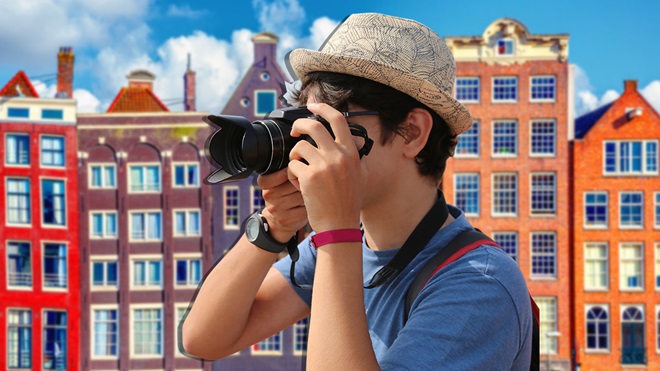If you've decided you need more than just a smartphone along on your next travel adventure, you'll be looking to pack a digital camera to capture those postcard moments. Here are some tips for making sure you're prepared to take the photographs that'll live with you forever.
We're on your side
For more than 60 years, we've been making a difference for Australian consumers. In that time, we've never taken ads or sponsorship.
Instead we're funded by members who value expert reviews and independent product testing.
With no self-interest behind our advice, you don't just buy smarter, you get the answers that you need.
You know without hesitation what's safe for you and your family.
And you'll never be alone when something goes wrong or a business treats you unfairly.
Learn more about CHOICE membership today
Getting packed
Camera bag
Whether you use a dedicated camera bag, your backpack or you pop it into your on-board luggage, make sure your camera is protected from impact, dust and moisture and that it's secure. Travellers are always a target for thieves, so choose a moisture-proof padded bag you can lock and that can't be easily cut. Also, pack your SLR or other system camera body with lenses detached. That way any impact won't damage the lens mount on the camera.
Batteries
Most cameras come with a proprietary rechargeable battery. Buy another one and keep them both charged. Cameras that can take AA batteries have an advantage if you're somewhere where they are readily available, but they usually don't last long and are bulky to carry.
Chargers, cables and connectors
Your camera will come with a charger and/or a cable for charging the battery in the camera. Make sure you have all these packed. You'll probably need a wall plug converter if you're heading overseas. Most chargers work in a number of countries, but it pays to check. Don't forget to pack a connection cable for downloading your images.
Back-up cards
Storage cards (SD and Compact Flash) are relatively cheap, so it makes sense to have more than one. They're pretty robust devices, but keep them away from dust and moisture which can easily be transferred into your camera.
If your SD Card gets wet, dry it off and leave it for at least 24 hours in a dry place before trying to use it. If it falls in salt water, gently wash it off with fresh water, or the salt may corrode the connection points. Generally it'll survive and you shouldn't lose the images on it.
What about back-ups?
If you're travelling for a long period or just take lots of pictures it may be a good idea to take a small laptop with you so you can download your images and free up space on your storage card. If you're really concerned about losing precious shots, you can also take a small USB external drive and back the images up to it occasionally. All this adds weight and stuff you have to look after, but it could save some heartache. Cloud storage is another option.
Tripod
They're bulky, clumsy and take up space. Consider your needs carefully, but even the best image stabilisation can't compete with a solid tripod when the light gets really low.
What can you do without?
Once you've packed everything and think you're ready to go, stop and look at what's in the bag. If there's anything that you can do without, take it out. Remember, you're going to have to lug this stuff around and nothing puts a damper on a holiday like a bad back.
On the road
Planes, trains and buses
Any border crossing or transition from one country to another may present you with problems when you're carrying a lot of equipment. It may be wise to compromise on one small unobtrusive camera if you are heading for a country where borders are tricky.
If you do decide to carry more gear, avoid putting anything valuable or delicate in checked-in luggage. Chargers, cables and other spares are probably going to be fine, but always carry-on your main camera and lenses. Check for airline luggage limits to make sure this will be possible. This is especially important for internal flights that might have more stringent restrictions.
Hotels
Hotel safes are a good option if you're leaving any valuables in your room. This includes computers and external drives, so choosing a small camera or computer may make life easier.
Never use a camera immediately after leaving a cold air-conditioned hotel and going into a humid street. Electronic devices don't like moisture and it's very likely that there will be some condensation in the camera. Waiting a few minutes for the camera to get to the surrounding temperature could save you a lot of money.
In the street
It's really easy to lose yourself in the moment when you see the shot that will make all your friends on Facebook jealous. But that's when you can get yourself into trouble.
- Be careful not to cross cultural boundaries, sometimes asking if you can take a picture will avoid an ugly confrontation.
- Pay attention to traffic.
- Keep your gear close – never leave bags of any sort loose beside you. It'll be too much of a temptation.
Insurance
Your travel insurance will probably include your camera. However, if you've a lot of equipment you might need to consider getting some specific cover.
- Always check your policy for exclusions.
- Make a record of the brand, model and serial numbers for all your gear then put it somewhere secure and accessible. It's probably best to have one copy with you and another at home.
Stock images: Getty, unless otherwise stated.



